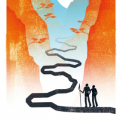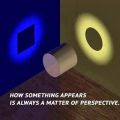Continuing the introduction
 Jeroen
Not all those who wander are lostNetherlands Veteran
Jeroen
Not all those who wander are lostNetherlands Veteran
As I’ve mentioned I’ve been working my way through the Access To Insight article which is an introduction to the Buddha’s teaching, and I would highly recommend it to people as a tour of the highlights of the Suttas. It basically takes the Buddha’s gradual instruction method and illustrates it with the suttas, all cross-linked and sourced so that when you see a section of a sutta that speaks to you you can go and explore the entire text.
Here is the list of topics in the sequence that the Buddha used to teach them:
Generosity (dana)
Virtue (sila)
— The 5 Precepts
Heaven (sagga)
Drawbacks (adinava)
Renunciation (nekkhamma)
The Four Noble Truths
— The Noble Eightfold Path
https://www.accesstoinsight.org/ptf/dhamma/index.html
I find it intriguing that very few people seem to teach Buddhism in this way any more, among the Tibetans where I’ve done some study courses there is a lot more focus on for instance the Lam Rim methods, or if you go looking via Google it takes you directly to the Four Noble Truths. But rarely do you see a complete lecture such as the Buddha gave, covering these various steps of instruction.


Comments
From the renunciation section, from the Abhaya sutta, also called Fearless:
https://www.accesstoinsight.org/tipitaka/an/an04/an04.184.than.html
I find these suttas on sensuality and craving for the body to be fascinating because the body does have a strong aspect of sensuality to it. There is a certain pleasure to being in a body that is operating well, a smoothness and a pleasantness within the body. It is not about a sexual sensuality but a kind of background aspect of physicality.
This sutta seems to say, abandon passion, desire and even fondness for sensuality in all its forms, and at the same time abandon passion, desire and fondness for the body.
Bear in mind, @kerome, that Theravada teachings came before Mahayana leanings. It's sometimes, but not always possible to compare the two. The school of Mahayana is a later construct and it is, in and of itself, sub-divided into several adherent 'schools'.
Theravada relies entirely on the earlier Pali texts...
Furthermore....
Read more, here.
I have enjoyed some of the sutras that have been presented. I wonder, however, if they are the most efficacious way to approach the Dharma in this day and age.
For 2500 years since the Buddha, great minds and great experiencer's have worked with the Dharma, and I feel they have added important insights, as well as refined others over that time. I question whether it isn't better to pass up the rather tedious and ancient format of Buddha's sutras and go to the juice of them as presented by great masters of our time?
I revere the Buddha and feel that he may have been the most important human who ever lived. I can also understand why there are those who want to go to the source of Buddhism without interpretations by others. It just seems to me that there is the risk of incomplete understanding and over expenditure of time with the sutras.
Slightly off topic but a number of times I have heard Sri Lankan and Thai teachers state that we need to develop sila and dana before we can expect to get anything out of our meditation practice.
All too often people new to meditation and who've grown up in a culture that encourages stinginess and living with no regard to the precepts wonder why their meditation practice doesn't reap any rewards......
Carry on...
I would imagine it depends what you think the dharma is? A Pureland follower would have a different view from those who adhere to Theravada.
Certainly the sutra’s are old and not really written in a form that’s appealing to the poetic mind. And as I said before I’ve taken part in a number of introductions to Buddhism, and usually gotten something out of them. So I certainly don’t mean to say anything negative about these other approaches.
The Buddha was both enlightened and a great teacher... that’s why I wanted to see what remains of his way of teaching and words in the sutra’s. I don’t have the memory to encompass all of it, that’s why I found the Access To Insight introduction and study guides so wonderful a find.
Truly enlightened teachers are in my view a rarity, and their words are a treasure. But in Buddhism because of the way it is structured it is difficult to pick out which of the many teachers were actually enlightened, and which were merely talented workers with knowledge of what had been said before. Therefore if you want to study the words of the enlightened, the Buddha is an essential cornerstone.
This is true, and you need to recognise in yourself that you have been virtuous, and not efface that part of one’s being. For example I was brought up to be honest, not to steal, I’ve always felt an abhorrence of killing, but I always treated these things as totally normal, and so in the Buddha’s methodology I wasn’t so much established in conscious virtue and peace of mind. Without the concept of virtue and what it means you are still a bit lost...
Here in Western Europe the state has taken on a lot of the role that generosity would have played in ages past. There are relatively few homeless people, because of the existence of state aid (in the UK benefits). So it is easy to grow up in a culture where you are not used to giving, because the state does it for you.
Which means that in Buddhist terms the ideas of generosity have been far removed from you, everyone around you has always had enough. And you may find it suddenly a shock to be confronted with those who appeal for your aid, and then to decide what to give...
Still from the renunciation section, the Kaligodha sutta
It makes it clear that when living in the present and without possessions, as a renunciate, one can find bliss. But if you talk to homeless people nowadays, you find they are concerned with finding a bathroom, a shower, a shelter when it is cold... still troubles beset them. It is the nature of the mind.
Yes renunciation means a very different way of life, where many thoughts can be dropped, but in the modern age it is not quite the same as in the Indian forests around 500 BC. Still it is amazing to think of how many years have passed and how man’s intellectual life has changed in between.